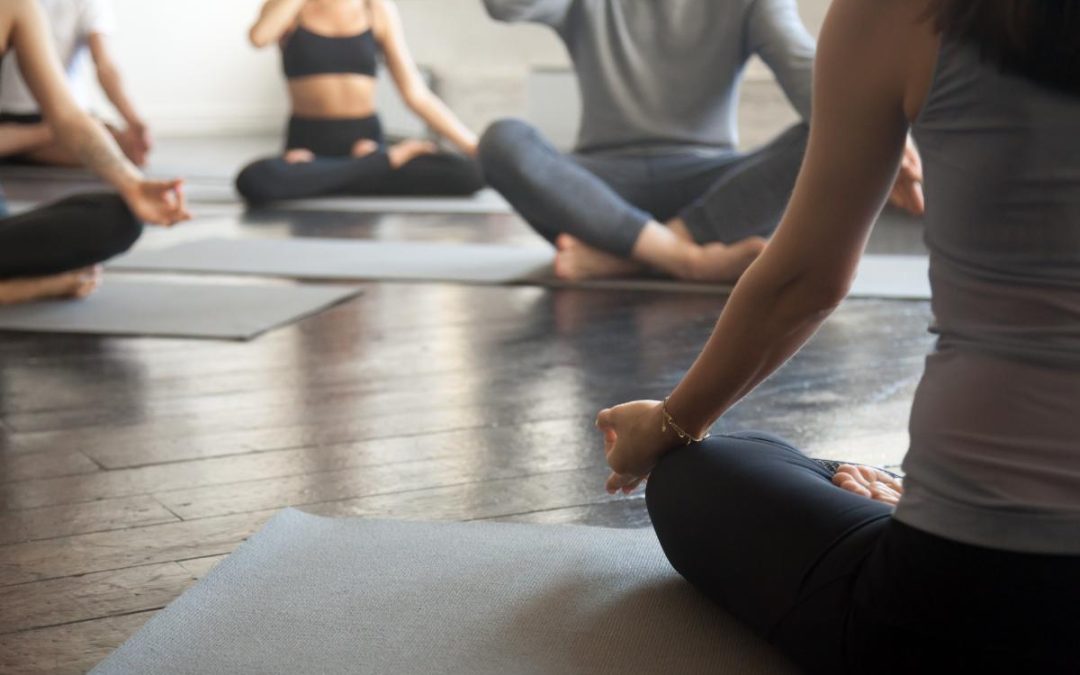What is Yoga Therapy?
Therapeutic yoga, often known as yoga therapy, is a branch of alternative medicine that makes use of yoga techniques to promote holistic well-being.
While it’s true that yoga has been shown to reduce stress, there are really a number of mental health issues that can be helped through yoga therapy. That makes it flexible enough to be used in tandem with other therapeutic approaches.
Therapeutic yoga makes use of many techniques and practices to aid the body in healing from injuries, aches, and pains. The purpose is to relax the body and mind and to get rid of any distressing feelings.
There is less of an emphasis on dynamic sequences and more on holding still, dramatic positions. These postures are designed to strengthen and stretch particular muscle groups and connective tissues for long-term health benefits and improved well-being.
Therapeutic practices like yoga postures, breathing techniques, meditation, and guided imagery are used in yoga therapy to aid in healing both the mind and the body.
Integrating one’s body, mind, and soul is a goal of yoga therapy, which is why this practise takes a holistic approach.
Yoga as a therapeutic practice has evolved to include not only physical but also psychological elements.
The yoga therapy can serve a preventative, curative, or palliative function, depending on the patient’s condition.
Therapeutic yoga is meant to be a liberating experience that improves one’s sense of well-being as a whole.
What Are Some Common Yoga Therapy Concerns?
The field of yoga therapy is rapidly expanding, and its effectiveness has recently been highlighted by scientific research.
Its primary function is in the treatment of mental and physical illness, but it also has preventative and maintenance applications for the user.
The efficacy of yoga therapy in the treatment of mood disorders like depression and anxiety is widely established.
Yoga therapy offers promise for the treatment of post-traumatic stress disorder (PTSD) and schizophrenia, according to a meta-analysis reported in the Primary Care Companion for CNS Disorders. Yoga therapists, meantime, have started tailoring their practices to the needs of autistic young.
Yoga instructor Louise Goldberg published Yoga Therapy for Children with Autism and Special Needs in 2013, and it has quickly become a standard reference for practitioners at all levels in the field.
Yoga therapy is also showing promise as a method of dealing with substance dependence, according to a 2012 article published in Social Work Today magazine
Those in the mental health field will tell you that yoga helps strengthen your body and mind in ways that counteract the effects of addiction.
As GABA (gamma-aminobutyric acid) levels are statistically low in those who experience substance misuse, anxiety, and depression, it is significant that yoga has been found to increase GABA levels.
Yoga therapy is used to treat a wide variety of physical health problems because of its emphasis on the connection between the mind and the body.
It has been used to successfully treat a variety of illnesses, including back pain, heart disease, asthma, chronic tiredness, hypertension, MS, and chemotherapy-related exhaustion.
Yoga therapy- its methods, and their efficacy:
In its therapeutic context, yoga takes several forms.
Yoga practices are increasingly being used by medical professionals to heal patients. Yoga therapy may resemble exercise therapy, cognitive behavioral therapy, or even physiotherapy
Yoga therapy sessions are often conducted in one-on-one or small group settings, as opposed to a typical yoga class.
Yoga therapy sessions are often conducted in one-on-one or small group settings, as opposed to a typical yoga class.
Both primary and secondary conditions can benefit from yoga therapy, and it can be used in conjunction with other treatments for optimal results. Everyone, regardless of age, can benefit from the wide variety of yoga techniques.
Yoga therapy may help with issues like stress, depression, poor eating habits, and inefficient body systems.
Anxiety and yoga therapy were both the subject of a 2011 qualitative study published in Inkanyiso: Journal of Humanities and Social Sciences.
The results showed that yoga therapy not only successfully lowered individuals’ anxiety but also improved their physique, relaxation, and mindfulness
How Will You Benefit from Yoga Therapy?
A first evaluation is performed by the therapist whenever a client decides to begin yoga therapy. These objectives will be achieved through this evaluation:
Recognize health issues
determine the patient’s current level of health and physical fitnes.
This initial consultation will set the treatment plan, frequency of visits, and appointment times. These elements are likely to be incorporated into future therapy sessions:
Pranayama (Breathing Exercises) The therapist will lead the patient through a series of breathing exercises, from deep, calming breaths to short, energetic ones.
Asanas, or physical postures, are taught by a therapist to help a patient with a variety of physical issues. In order to alleviate symptoms of anxiety and sleeplessness, “Legs Up the Wall” is one common therapeutic yoga posture. The individual in this position is lying on their back with their legs propped up against a wall.
Asana (Yoga Posture) Meditation: The goal of meditation while in Asana is to calm the mind and bring about awareness.
Through the use of guided imagery, yoga therapists can help relax their clients’ bodies and minds.
Conclusion:
Discovering a means to make yoga a regular part of your life is crucial. Yoga therapists typically provide patients advice on how to put their newfound skills to work once they return to their own homes.
Knowing that there is a wide variety of yoga therapists available is crucial before making a selection. It includes psychotherapists, psychologists, and physical therapists in addition to yoga instructors, yogis, and gurus.
The Yoga Journal website advises users to ask around for advice on good yoga studios.
The most important factor is finding a therapist with whom you can form a productive working connection and who has a good background in the field.
For more blogs visit on our Nepal Yoga Home blog section.

